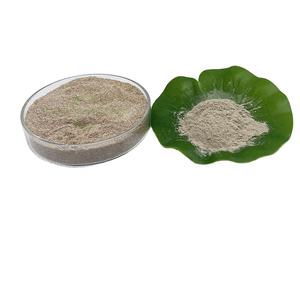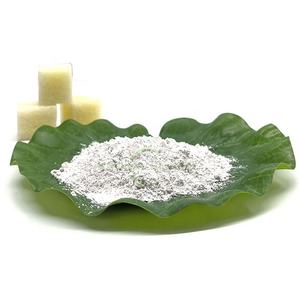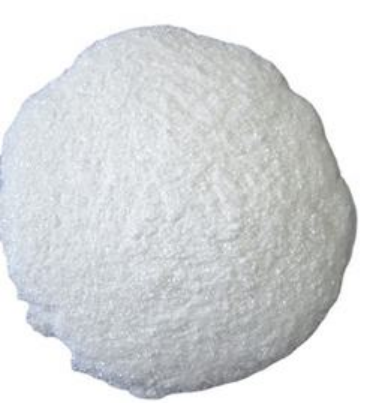1. Introduction
Just 36 hours ago, a team at MIT published a preprint detailing how sodium lauryl sulfate (SLS) dramatically improves the dispersion stability of copper 1 bromide nanoparticles used in next-gen solar cells. While most consumers associate SLS with foaming shampoos or toothpaste, this humble anionic surfactant is actually a silent workhorse in some of the most advanced scientific and industrial niches. Forget lung surfactants or baby shampoo debates—today, we’re diving into the weird, wonderful, and wildly practical applications of sodium lauryl sulfate far beyond the bathroom cabinet.

And no, this isn’t about whether sls sodium lauryl sulfate gives you rashes (though we’ll admit, that’s a hot take). This is about how sodium dodecyl sulfate—yes, it’s the same thing as SLS, just with a fancier IUPAC name—is enabling breakthroughs in everything from herbicide delivery to firefighting. Ready to surfactant your way into the future? Let’s go.
2. Precision Agriculture: SLS as a Supercharged Surfactant for Herbicides
Farmers aren’t just tossing Roundup and hoping for the best anymore. Modern weed control demands precision, and that’s where sodium lauryl sulfate shines as a surfactant for herbicides. Unlike non-ionic surfactants like polysorbate 80 or Span80, SLS is anionic, which helps it bind more effectively to waxy plant cuticles—especially on stubborn weeds like kochia or waterhemp.
When mixed with glyphosate or other systemic herbicides, SLS acts as a lawn wetting agent that reduces surface tension, allowing the active ingredient to spread evenly and penetrate deeper. In fact, field trials show formulations with sodium lauryl sulfate for sale from suppliers like Rohit Surfactants Private Limited outperform those using methylated seed oil or even alkyl polyglucoside in arid conditions.
- SLS enhances droplet adhesion on hydrophobic leaf surfaces
- Works synergistically with ammonium lauryl sulfate for faster uptake
- More cost-effective than bio surfactants like coco glucoside for large-scale use

3. Nanomaterial Synthesis: Stabilizing Particles with Anionic Precision
In labs worldwide, sodium dodecyl sulfate isn’t just cleaning glassware—it’s templating nanostructures. Its long hydrophobic tail (thanks, dodecyl alcohol!) and charged sulfate head make it ideal for controlling particle size during synthesis. Recent work with copper 1 bromide quantum dots relies on SLS to prevent aggregation, ensuring uniform optical properties.
What’s wild? SLS can be swapped with sodium dodecylbenzene sulfonate or even fluoro surfactants for specialized applications, but its balance of cost, solubility, and charge density keeps it in the lead. And unlike cationic surfactants like cetyl trimethyl ammonium bromide (CTAB), SLS doesn’t interfere with negatively charged reaction intermediates.
4. Firefighting Foam: The Foaming Power of SLS and Its Cousins
Ever wonder how firefighting foam blankets flames so effectively? Enter sodium lauryl ether sulfate (also called sodium lauryl ether sulphate or SLES)—a close relative of SLS. While SLS itself is too harsh for some foam formulations, it’s often blended with amphoteric surfactants like cocamidopropyl betaine (aka coco betaine or amidopropyl betaine) to create stable, heat-resistant foams.

These blends leverage the anionic-cationic synergy (well, technically anionic-amphoteric) to produce bubbles that resist collapse under high temperatures. Sodium laureth sulfate, laureth sulphate, and even sodium lauroyl sarcosinate may join the mix to fine-tune foam viscosity and spreadability. Forget sls sulfate myths—this is life-saving chemistry.
5. Enhanced Oil Recovery: SLS as a Microscopic Oil Mover
Deep underground, oil clings stubbornly to rock pores. To coax it out, engineers inject surfactant floods—and sodium lauryl sulfate is a rising star. Its anionic nature helps reduce interfacial tension between oil and water, allowing trapped crude to flow toward extraction wells.
Compared to lignin sulfonate or ethoxylated alcohols, SLS offers sharper control at lower concentrations. And when paired with nonionic surfactants like Pluronic 127 (poloxamer 188) or decyl glucoside, it creates mixed micelles that mobilize even heavy oils. Sodium cocoyl isethionate or sodium coco sulfate might sound gentler, but in the oil patch, SLS delivers brute-force efficiency.
6. Bonus: Why SLS Isn’t Always the Answer (And What Is)
Not every niche loves SLS. In sensitive ecosystems or organic farming, bio surfactants like sodium cocoyl glutamate or coco sodium sulfate are preferred. For skin-contact applications, sodium lauroyl methyl isethionate or sodium oleate offer milder alternatives. And when you need cationic action—say, for antimicrobial coatings—CTAB or cetyltrimethylammonium bromide step in.
The key? Understanding surfactant meaning: molecules that reduce surface tension by having both hydrophilic and hydrophobic parts. Whether anionic, cationic, non-ionic, or amphoteric, the right choice depends on pH, salinity, temperature, and compatibility. SLS is powerful, but it’s not universal.
7. Conclusion
From quantum dots to weed killers, sodium lauryl sulfate proves that the most unassuming chemicals often power the biggest innovations. While debates about sls sodium laureth sulfate in shampoo rage on, scientists and engineers are busy deploying this versatile surfactant where it matters most—in the trenches of real-world problem-solving. So next time you see ‘sodium lauryl sulfate’ on a label, remember: it might just be helping grow your food, extinguish a blaze, or harvest tomorrow’s energy.
Our Website founded on October 17, 2012, is a high-tech enterprise committed to the research and development, production, processing, sales and technical services of ceramic relative materials such as 5. Our products includes but not limited to Boron Carbide Ceramic Products, Boron Nitride Ceramic Products, Silicon Carbide Ceramic Products, Silicon Nitride Ceramic Products, Zirconium Dioxide Ceramic Products, etc. If you are interested, please feel free to contact us.


